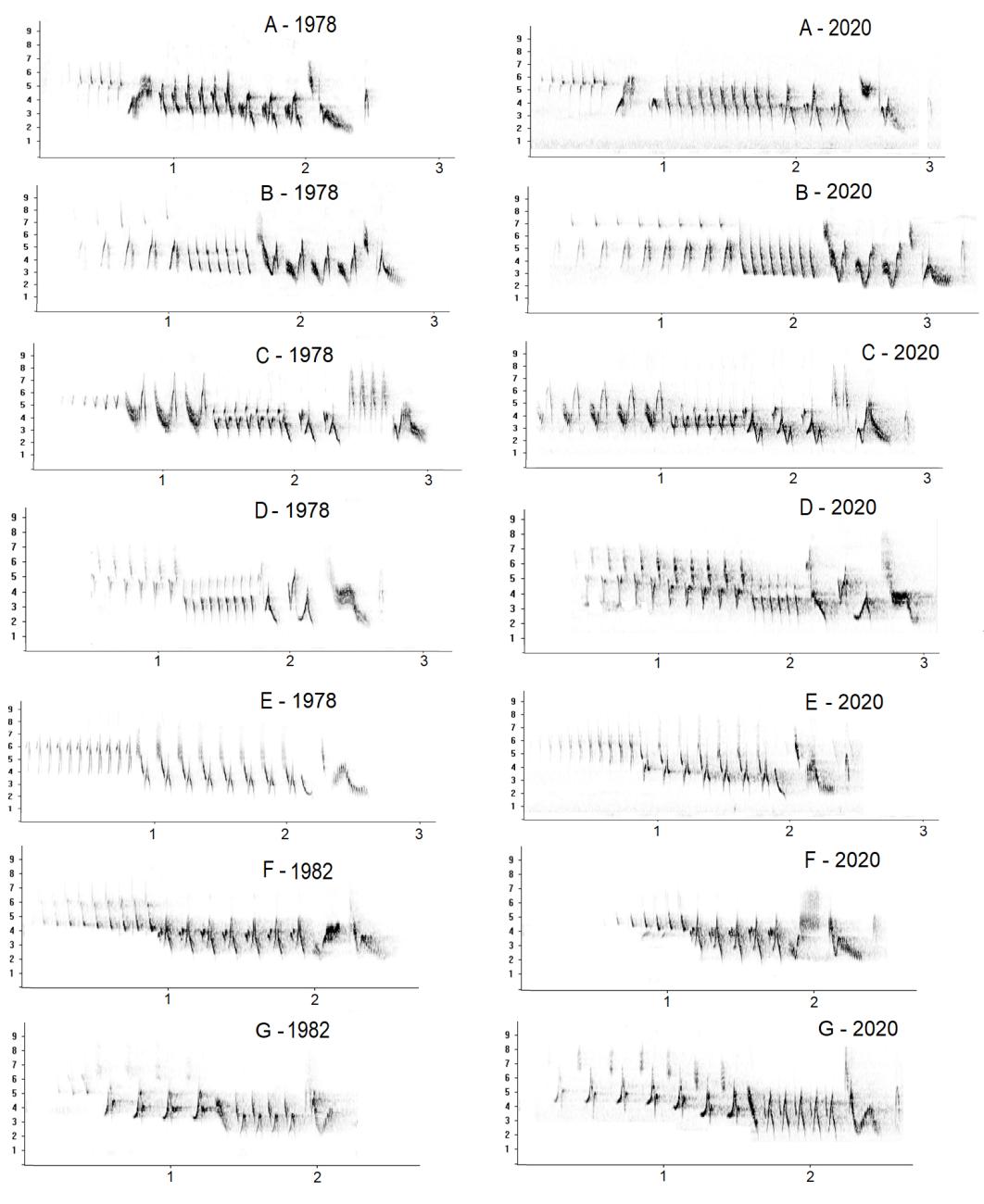
In addition to humans, vocal learning has been found in cetaceans, pinnipeds, bats, elephants, songbirds, hummingbirds, and parrots. It has been studied in most detail in songbirds. We examined whether culturally transmitted behavioral traits, such as bird song types, are stable in natural environments. In migratory populations of finches, there are about twenty stereotypical song types per population, with one to seven song types per male. The sets of song types differ between different populations, even those as geographically close as different parts of the Moscow region.
The article describes the results of comparing sets of song types recorded with an interval of forty years on the same territory, at the Zvenigorod biological station in the Moscow region, with a set of song types in the living population of finches in Moscow parks. It was found that at the Zvenigorod biological station, 11 types of songs remained virtually unchanged from 1978 to 2020, retaining a full set of phrases and elements. The four other song types differed by only one phrase. At the same time, the songs of males recorded in Moscow in 2019 differed significantly more from the songs of Zvenigorod finches in 2020. This is the first time such a long-term study of the cultural inheritance of song in a migratory species of songbirds has been carried out.

The results of the study were published in the journal Behavioral Processes:
Ivanitskii V.V., Marova I.M., Samsonova I.P., Volodin I.A., Volodina E.V., 2023. Four decades later: the highly conserved repertoire of song types in chaffinch (Fringilla coelebs). Behavioural Processes, v. 205, 104821. https://doi.org/10.1016/j.beproc.2023.104821
